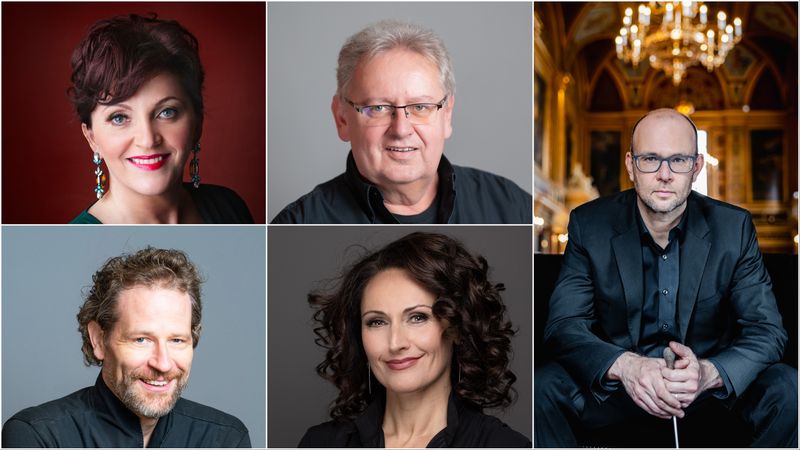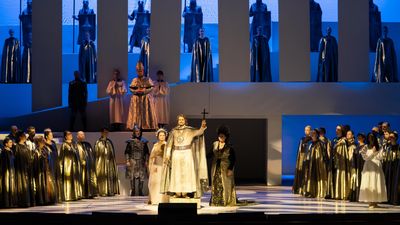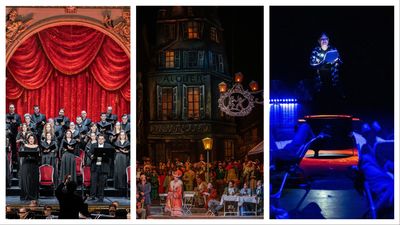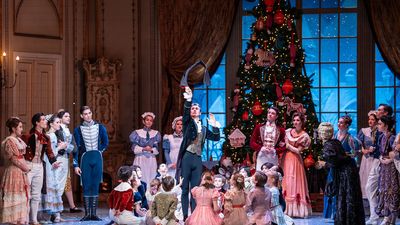
The first act of Die Walküre, the Wesendonck Lieder evoking Tristan und Isolde, and the overture to Die Meistersinger von Nürnberg feature in the Hungarian State Opera Orchestra’s concert on 12 October 2025. The concert, titled Golden Age: Wagner, will take place in the Ybl Palace on Andrássy Avenue, featuring soloists István Kovácsházi, Eszter Sümegi, Krisztián Cser, and Andrea Szántó. The OPERA Orchestra will be conducted by Péter Halász.
In its 142nd season, the Hungarian State Opera places special emphasis on the works of Beethoven, Mozart, and Wagner. As part of this focus, in addition to opera premieres related to these composers, the OPERA Orchestra will dedicate individual symphonic concerts to each of them.
The main feature of the concert titled Golden Age: Wagner will be a concert performance of Act I from Die Walküre. In this most frequently performed and independently meaningful work of the Ring tetralogy, based on ancient Germanic mythology, the twin children of Wotan, lord of the gods, Siegmund and Sieglinde, find each other and fall in love at first sight. Fleeing from his pursuers and a storm, the hero Siegmund not only finds refuge in Sieglinde’s home but also discovers his paternal inheritance, the mystical sword Nothung. The dramatic tension heightens when Sieglinde’s tyrannical husband, and one of Siegmund’s pursuers, Hunding arrives at night. Although he respects the guest’s right of protection and does not attack, he challenges Siegmund to a duel the next day.
The first act of Die Walküre has enriched the operatic repertoire with numerous unforgettable moments. In addition to the recurring leitmotifs that run through the tetralogy, Siegmund’s sword monologue and Spring Song, as well as the act-ending duet of Siegmund and Sieglinde, are among the most beautiful musical expressions of heroism and fulfilled love. This chamber drama–like excerpt will be performed by three of Hungary’s foremost Wagner singers: István Kovácsházi, Eszter Sümegi, and Krisztián Cser.
Before the intermission, the mythological story of fulfilled love will be preceded by musical reflections of Wagner’s real but unfulfilled love: the Wesendonck Lieder. The composer set five poems by his muse, Mathilde Wesendonck, to music between 1857 and 1858, before their six-year platonic relationship was discovered by Wagner’s wife, Minna. Later, Wagner memorialized their bond in another of his masterpieces, Tristan und Isolde, in which musical motifs from two of the poems – Im Treibhaus (“In the Greenhouse”) and Träume (“Dreams”) – reappear. The connection between the songs and the opera is further underscored by the symphonic version of the Wesendonck Lieder, originally written for voice and piano and orchestrated by Wagner’s conductor, Felix Mottl, at the composer’s request. The songs, expressing eternal love, longing, desire, and transience, will be performed by the acclaimed Wagner singer Andrea Szántó.
Following the season-opening OPERA141 concert, the Hungarian State Opera Orchestra will introduce this programme with another of Wagner’s festive overtures: Die Meistersinger von Nürnberg. As the composer’s only mature comic opera, it contains lighter, more playful elements and lacks the mysticism familiar from his other music dramas. The overture presents the opera’s main motifs: the dignified and exalted “Mastersinger” theme, the lyrical love motif, and the contrast between the traditional, rigid structure of the Mastersingers and the innovative spirit of the young Walther, supported by Hans Sachs. Although the complete opera premiered in Munich in 1868, Wagner himself had already conducted the overture in Leipzig’s Gewandhaus in 1862.
The Hungarian State Opera Orchestra will be conducted by the company’s principal guest conductor, Péter Halász, who brings decades of experience from institutions such as the Zurich Opera House, Mainz State Theatre, Aachen Theatre, and Deutsche Oper am Rhein. As the conductor of the Hungarian State Opera’s Ring cycle, he is regarded as an accomplished interpreter of Wagner and the German symphonic tradition.


